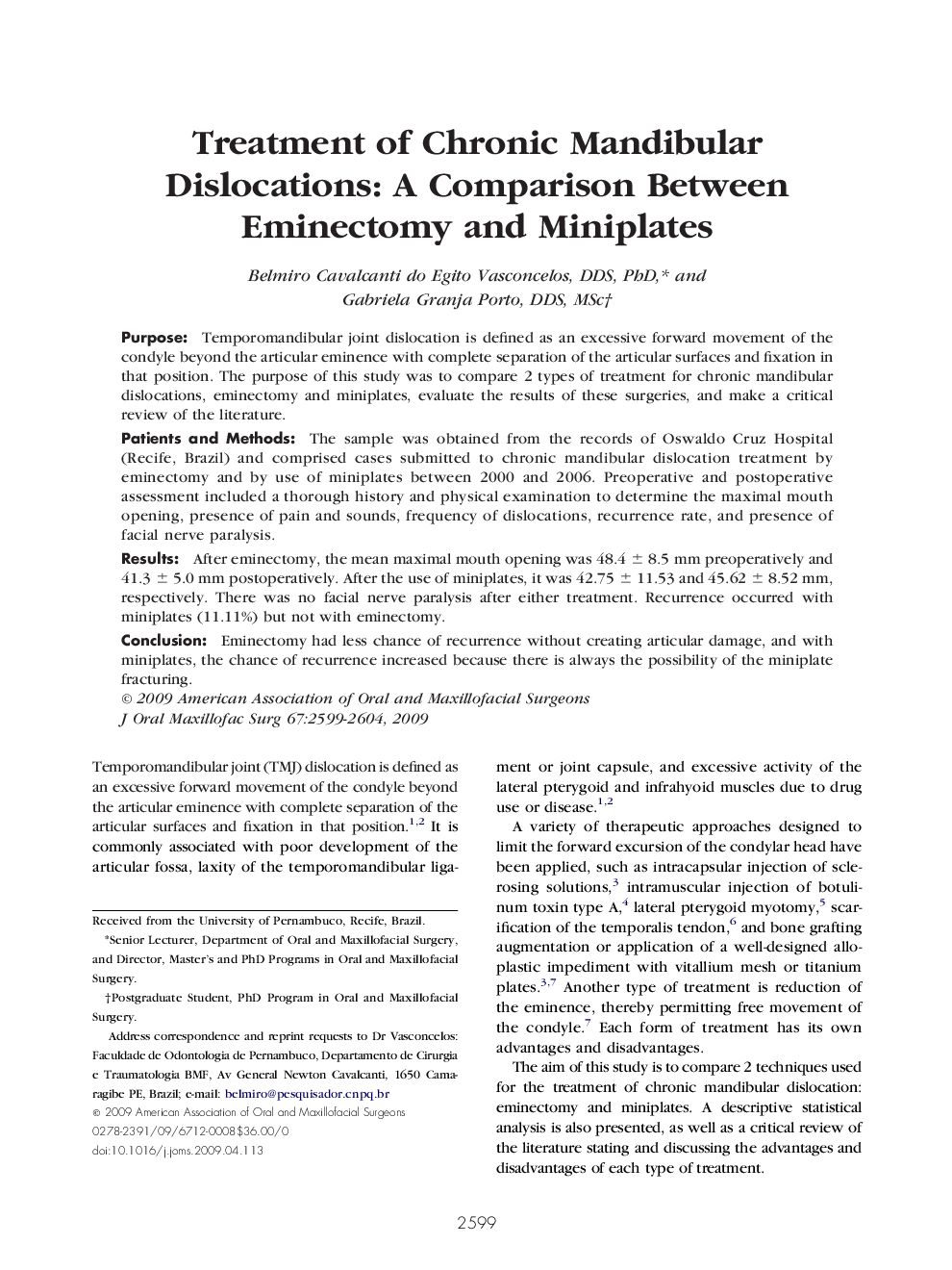| کد مقاله | کد نشریه | سال انتشار | مقاله انگلیسی | نسخه تمام متن |
|---|---|---|---|---|
| 3158434 | 1198234 | 2009 | 6 صفحه PDF | دانلود رایگان |

PurposeTemporomandibular joint dislocation is defined as an excessive forward movement of the condyle beyond the articular eminence with complete separation of the articular surfaces and fixation in that position. The purpose of this study was to compare 2 types of treatment for chronic mandibular dislocations, eminectomy and miniplates, evaluate the results of these surgeries, and make a critical review of the literature.Patients and MethodsThe sample was obtained from the records of Oswaldo Cruz Hospital (Recife, Brazil) and comprised cases submitted to chronic mandibular dislocation treatment by eminectomy and by use of miniplates between 2000 and 2006. Preoperative and postoperative assessment included a thorough history and physical examination to determine the maximal mouth opening, presence of pain and sounds, frequency of dislocations, recurrence rate, and presence of facial nerve paralysis.ResultsAfter eminectomy, the mean maximal mouth opening was 48.4 ± 8.5 mm preoperatively and 41.3 ± 5.0 mm postoperatively. After the use of miniplates, it was 42.75 ± 11.53 and 45.62 ± 8.52 mm, respectively. There was no facial nerve paralysis after either treatment. Recurrence occurred with miniplates (11.11%) but not with eminectomy.ConclusionEminectomy had less chance of recurrence without creating articular damage, and with miniplates, the chance of recurrence increased because there is always the possibility of the miniplate fracturing.
Journal: Journal of Oral and Maxillofacial Surgery - Volume 67, Issue 12, December 2009, Pages 2599–2604